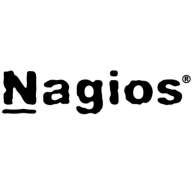

Nagios XI and vRealize Network Insight compete in the network management and monitoring category. vRealize Network Insight seems to have the upper hand in visualization and ease of use, while Nagios XI excels in flexibility and cost-effectiveness.
Features: Nagios XI offers extensive monitoring capabilities such as disk space and CPU utilization monitoring through a highly customizable platform. It supports a variety of plugins that enhance its extensibility. vRealize Network Insight provides detailed network flow visualization and supports user-friendly natural language queries, making it valuable for network analysis. Its intuitive dashboard aids in comprehensive management and planning.
Room for Improvement: Nagios XI requires additional plugins for extended services and has a complex setup process, especially in clustering and failover which are still under development. Its configuration and user management may be challenging without proper scripting skills. vRealize Network Insight could improve integration with more third-party vendors and streamline configuration management for smaller environments.
Ease of Deployment and Customer Service: Nagios XI is flexible in deployment across private and hybrid clouds and offers prompt customer service, although with higher technical support costs. Community support is robust. vRealize Network Insight simplifies on-premises deployment and offers professional customer service but needs to improve support for complex integrations.
Pricing and ROI: Nagios XI holds a strong value proposition, offering similar functionality with its open-source variant, Nagios Core, for free. Its enterprise licensing is considered cost-effective. vRealize Network Insight is seen as costly but generally delivers value for its price with room for pricing adjustments. Both products promise significant ROI by enhancing visibility and operational efficiency.


Nagios XI provides monitoring of all mission-critical infrastructure components, including applications, services, operating systems, network protocols, systems metrics, and network infrastructure. Third-party add-ons provide tools for monitoring virtually all in-house and external applications, services, and systems.
Nagios XI uses a powerful Core 4 monitoring engine that provides users with the highest levels of server monitoring performance. This high degree of performance enables nearly limitless scalability and monitoring powers.
With Nagios XI, stakeholders can check up on their infrastructure status using the role-based web interface. Sophisticated dashboards enable access to monitoring information and third-party data. Administrators can easily set up permissions so users can only access the infrastructure they are authorized to view.
Nagios XI Benefits and Features
Some of the benefits and top features of using Nagios XI include:
Reviews from Real Users
Nagios XI stands out among its competitors for a number of reasons. Several major ones are its integration options and monitoring abilities, as well as its alerting features.
David P., a senior DevOps engineer at EML Payments Ltd, writes, “We use Nagios as a network discovery tool. We use Nagios to maintain our uptime statistics and to monitor our services. It has allowed us to be much more sophisticated in our monitoring and alerting.”
An IT-OSS manager at a comms service provider notes, “Nagios XI has a custom API feature, and we can expose custom APIs for our integration. This is a great feature.”
We monitor all IT Infrastructure Monitoring reviews to prevent fraudulent reviews and keep review quality high. We do not post reviews by company employees or direct competitors. We validate each review for authenticity via cross-reference with LinkedIn, and personal follow-up with the reviewer when necessary.